Categories: Electrician at home, Automata and RCD
Number of views: 15531
Comments on the article: 0
How to protect wiring from overload and short circuit
The main task of an electrician is to make wiring reliable and safe. Accidents may result in fire or electric shock. Accidents occur due to increased current and short circuits. As a result, too much current flows through the conductors, they heat up and insulation melts on them, sparking or an arc occurs. In this article I will talk about how to protect wiring from overload and short circuit.

Why overload short circuits are dangerous - theory
To understand the danger of high current flowing through wires, one needs to recall two important laws of physics from the course “electricity and magnetism”. The first is Ohm's law:
The current in the circuit is directly proportional to the voltage and inversely proportional to the resistance.
This means that if the circuit has low resistance, the current will be large, and if large, then small, and also with increasing voltage, the current increases with it. This seems obvious, but for beginners the question often arises “why is a short circuit called short?” And what happens is long? ” That's just because with a short circuit, the resistance of the closed circuit is approximately equal:
RKZ= RLINES+ r + RCONTACT,
where R LINES is the resistance of the conductors, depends on their cross section and length (R = po * L / S).
r is the internal resistance of the power source. In simple terms, it depends on the design if it is a galvanic cell, or on the cross section of the wire in the transformer winding. RCONTACT - transitional or contact resistance - its value depends on the contact area of two closed conductors.
It is also worth considering reactive inductive and capacitive resistances, but in household wiring you can omit this issue.
As a result, when the circuit is closed, the current is limited only by the above resistances, and in most cases they are negligible (fractions of Ohms, in the home electrical network), even with a resistance of 1 Ohm at a voltage of 220V, a current of 220V will flow in the circuit, usually calculated against your wiring at 16-40A. But in practice, the short-circuit current is hundreds and thousands of amperes!
The second law that needs to be said is the Joule-Lenz law, the textbooks say about it:
The amount of heat released per unit time in the considered section of the circuit is proportional to the product of the square of the current strength in this section and the resistance of the section.
What does it mean? That, the greater the resistance of the conductor or the current through it, the more heat will be released on it. That is, when current flows through the wires, they heat up. Each conductor has a specific resistance.
So that the conductor does not overheat, they select the desired section for a certain current. In order for the core not to heat up, the heat must be dissipated into the environment, it is dissipated the faster, the larger the area with which it is dispersed.
In this regard, thin wires under high load begin to warm up and become hot, and thick wires manage to transfer heat to the outside, and their temperature remains almost unchanged. If the temperature of the conductor is too high, up to the reddening of the core, the insulation will melt.
Conductor cross section - first step towards overload protection
You probably know that for each load a wire or cable with cores of a certain cross section is chosen, for example, to assess the correct choice of the cross-section of the cores of a popular cable of the VVG-NG-ls brand, use table 1.3.4 from the PUE. It describes the requirements for wires and cables with rubber or polyvinyl chloride (PVC) insulation. It also takes into account the laying method and the number of conductors.
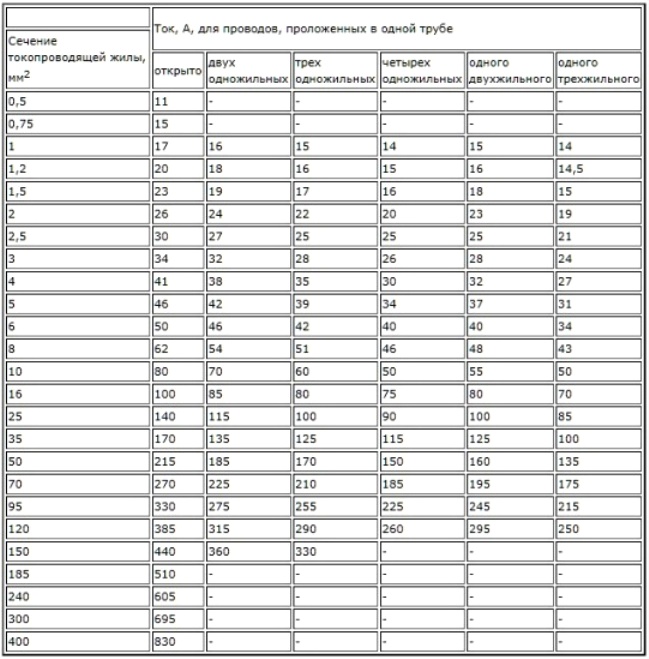
Since the conductors are chosen with a margin, the electricians are guided by a simple rule: for sockets, the wire is 2.5 mm², and for lighting - 1.5 mm². In most cases, this is enough.
According to this table, you check the calculated values of the cross section and whether the cores can withstand such a current density without overheating and other troubles.
For more details on this issue, see this article:Cross-sectional area of wires and cables, depending on the current strength, calculation of the required cable cross-section
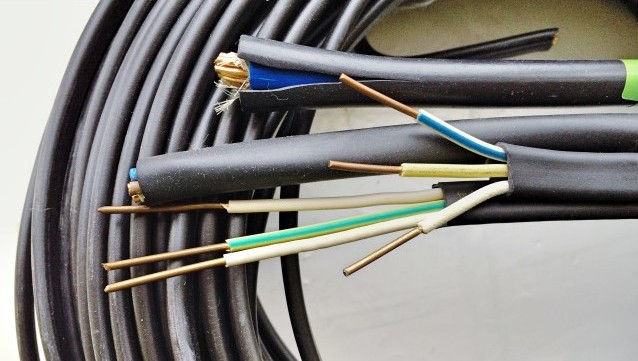
So, the first step to protection against overloads is laying good wiring from a copper cable of the type VVG-NG-ls or NYM. Please note that when purchasing cable products “on the market”, products manufactured not in accordance with GOST may be waiting for you, which means that the actual cross section is likely to be less than the specified. The result is that it seems that the cable was laid “what is needed”, but as a result of the connection they burn out, the wires are heated, and the insulation melts.
Protective equipment
Circuit breaker - This is the main switching device for protecting wiring from overload and short circuits. People call them machine guns and erroneously “packers” (which is fundamentally wrong). We talked about how it works in the article The device and principle of operation of the circuit breaker
The main thing to remember is that the circuit breaker protects the CABLE, CORD or WIRE from fire or burnout, but not equipment or people.
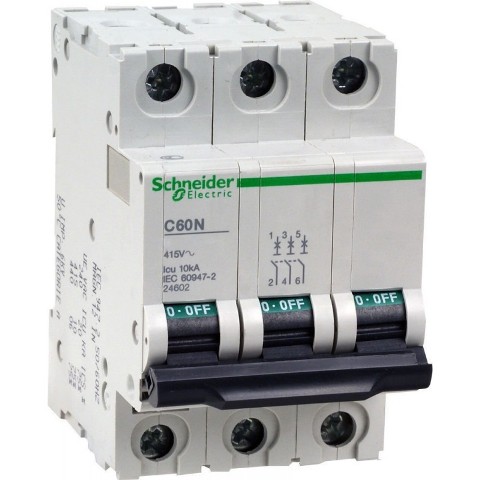
In short, there are two releases in the circuit breaker - electromagnetic and thermal. Electromagnetic trips when there is a strong excess of current (units and tens of times greater than the rated current), for example, with a short circuit, and thermal with a slight overload, for example, by 20-50%.
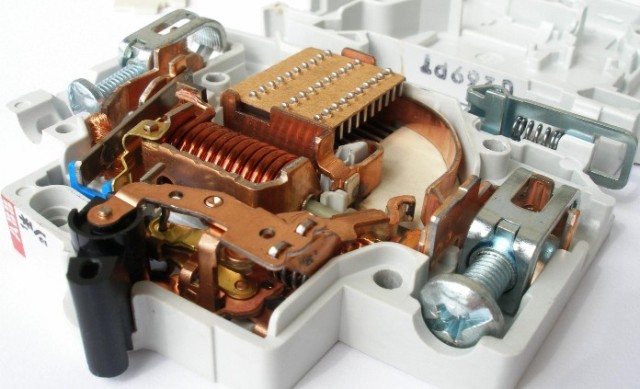
Thus, if you turn on a lot of electrical appliances - the thermal release will heat up, this is a bimetal plate, which bends when heated. By bending it will set in motion the circuit breaker tripping mechanism, thus the circuit is de-energized.
Electromagnetic release - This is a solenoid inside which there is a core. When a large current flows, the solenoid pushes the core and drives the shutdown mechanism. This is a kind of current relay.
The safety of its use depends on the correct choice of the rating and the type of time-current, characteristics.
Circuit breaker rated current choose based on the throughput of the weakest point in the wiring. For example, no matter what cable you lay on the outlets, look at what is written on it; in most household outlets you will see 16 amperes, and sometimes 10 amperes.
Therefore, the rating of the circuit breaker is selected at 16A. If, for example, you decide to put an automatic machine with a rated current of 32A, based on the considerations “there are several sockets, and the cable can withstand it, it’s 2.5-4 mm²”, then when connected to a single socket through a heater and hair dryer extension, it will go through it the current is greater than 16A, as a result, its contacts begin to warm up, and the case melts.
If you don’t disconnect the devices in time, then, when heated, the contacts will become covered with carbon, the parts of the body will melt, and the metal bars holding the plug will expand and the contact will weaken. Because of which contact resistance will increase and heating will occur even more intensely, the outlet will begin to sparkle and smoke, until the wallpaper or walls in which it is installed ignites.
Time-current characteristic, in simple terms, this is a characteristic that shows how quickly the machine will turn off in the event of an overload. In a home electrical panel, they often use class B and C machines.
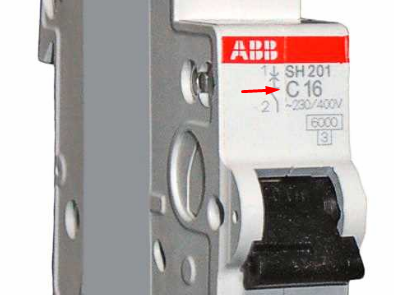
The second rule is to install circuit breakers with a rated current that does not exceed the weakest link in the wiring.If you need more consumers to be able to work simultaneously - divide the sockets into groups in each room and lay a separate cable for them (radial wiring diagram).
Differential leakage protection
And to this day, the townsfolk, having installed an RCD, for some reason believe that it will protect against overload or short circuit, this is also a mistake.
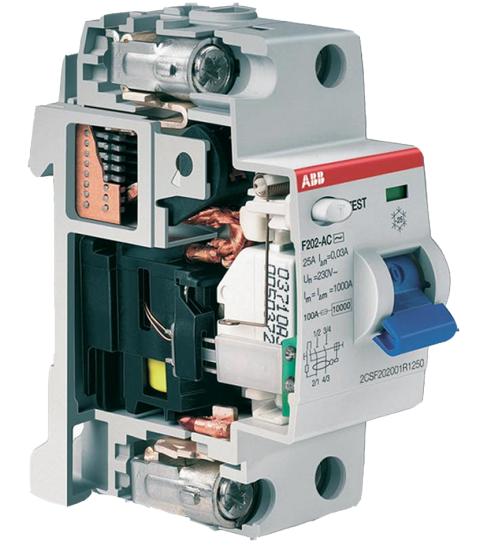
RCD - protective shutdown device, designed to protect against current leakage. This is necessary for: protecting a person in case of accidental contact of live parts under voltage (bare wires, the case of a damaged electrical appliance), as well as current leakage to grounded housings, pipelines, elements of building structures and others.
The RCD monitors how much current has passed through the phase and how much along the neutral conductor, if there is a difference between the wires, then a leak has occurred and the power contacts open.
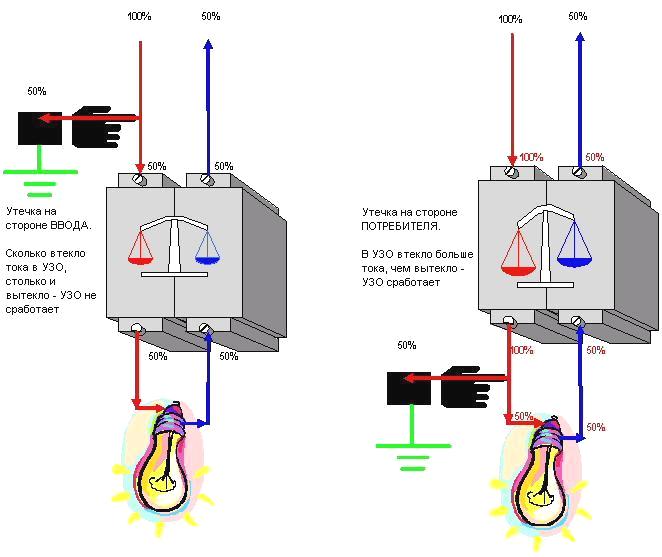
This ensures the safety of people, as well as reducing the risk of further leakage to a short circuit, if insulation is damaged, which is especially important in a wooden house, for example.
Another type of safety device is difavtomat, combines the functions of an RCD and a circuit breaker. In the figure below, you see how to distinguish a difavtomat (left) from an RCD (right), the differences in the diagram and in the marking.
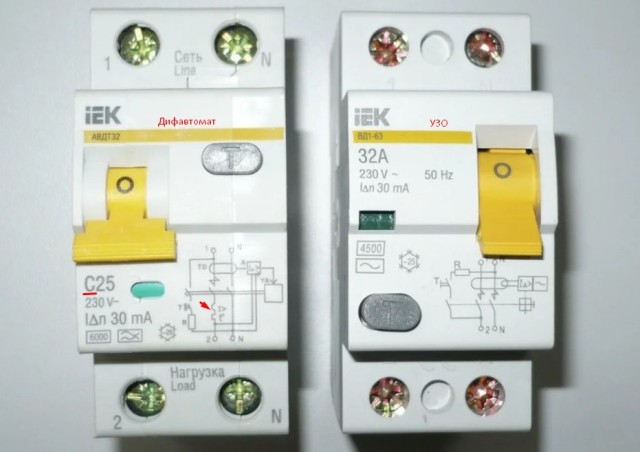
RCDs and difiltomata are always performed in a bipolar or four-pole form of single-phase and three-phase circuits, respectively. According to the PUE p. 1.7.80, should be used only if there is grounding, that is, in a two-wire network they are not allowed to be used. However, this is a controversial issue in this article will not be considered.
Power limiter
The next device disconnects the load in case of excess power. This is a power limiting relay. An example of such a device is a single-phase OM-110 or three-phase OM-310, there are other models - these are just for example.
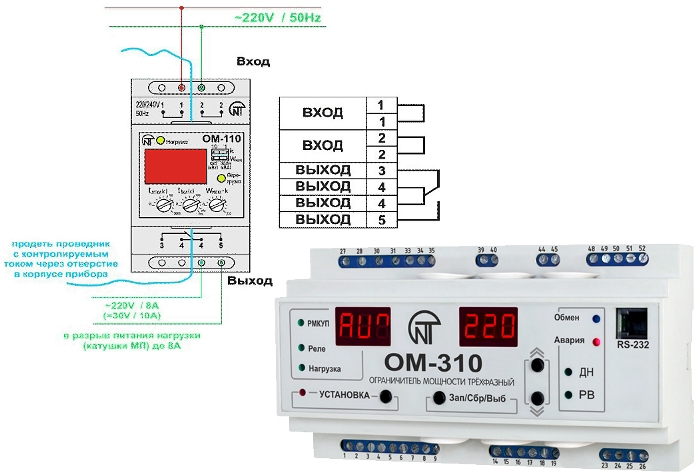
Although this device is not inherently protective and is used to a greater extent by power supply or network companies to control and limit the consumption of electricity that is higher than normal or to reduce this value in an emergency. The product monitors power consumption and, if exceeded, shuts off the consumer.
Nevertheless, the device will not allow overloading the wiring if you correctly set the parameters of its operation. If you are interested in learning more about such devices, write in the comments and we will tell you about them.
Conclusion - 3 rules so that there is no short circuit and overloads
Safety and durability of electrical wiring lies on three pillars:
1. The right choice of cross-section of cable products.
2. Installation of circuit breakers and other protection devices of the desired ratings. Buy them only in certified stores so as not to run into a fake, give preference to brands such as ABB, Schneider Electric, and from cheaper ones - domestic KEAZ (Kursk).
3. The proper operation of electrical equipment.
By “proper operation” I mean:
1. Timely replacement and broaching of terminal blocks of wiring accessories - automatic devices, RCDs, light switches, sockets.
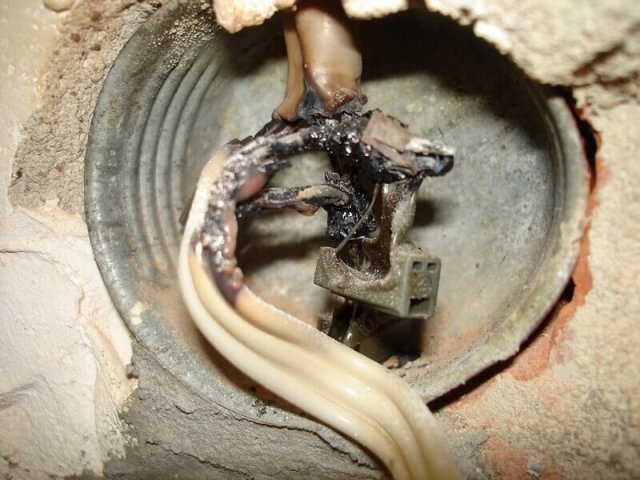
2. The rational distribution of load on outlets - do not insert powerful electrical appliances into tees and extension cords, so you can overload the outlet or cable that supplies it (see - Why it is dangerous to use tees and extension cords).
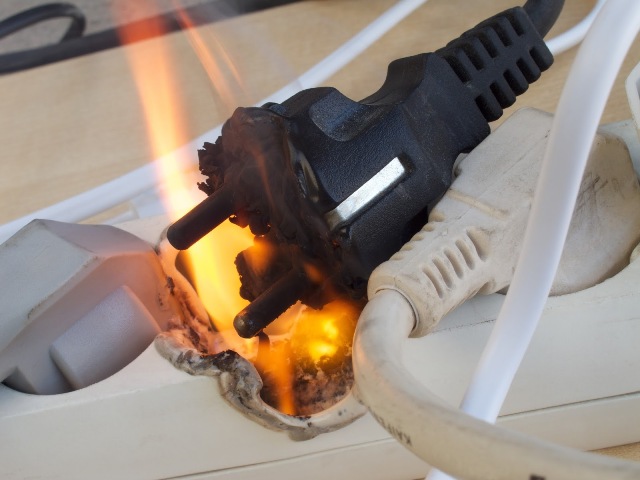
3. Careful handling of electrical appliances - do not allow water or metal objects to get inside household appliances so that a short circuit does not occur. Indeed, even if the circuit breakers and the cable are installed, you need to remember that the circuit breakers sometimes stick or work slowly, as a result of which the connections in the electrical boxes are fired.
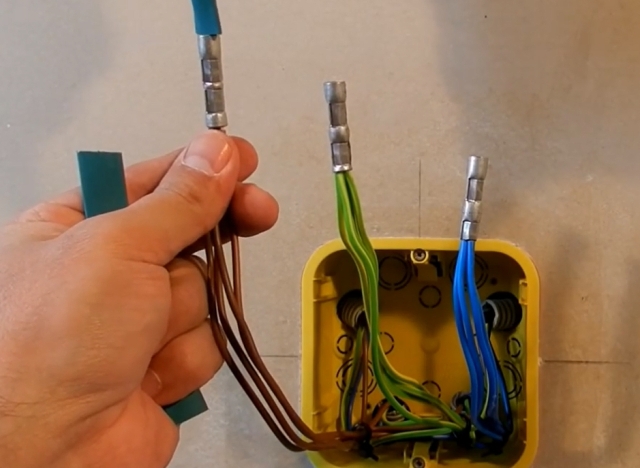
4. When repairing devices and installing or maintaining wiring, use high-quality insulation that sticks well or heat shrink tubing. Avoid twisting - connect the wires by soldering, welding, sleeve or terminal blocks. This way you avoid short circuits due to poor insulation or heating of the connections in the junction boxes.
See also at i.electricianexp.com
:
